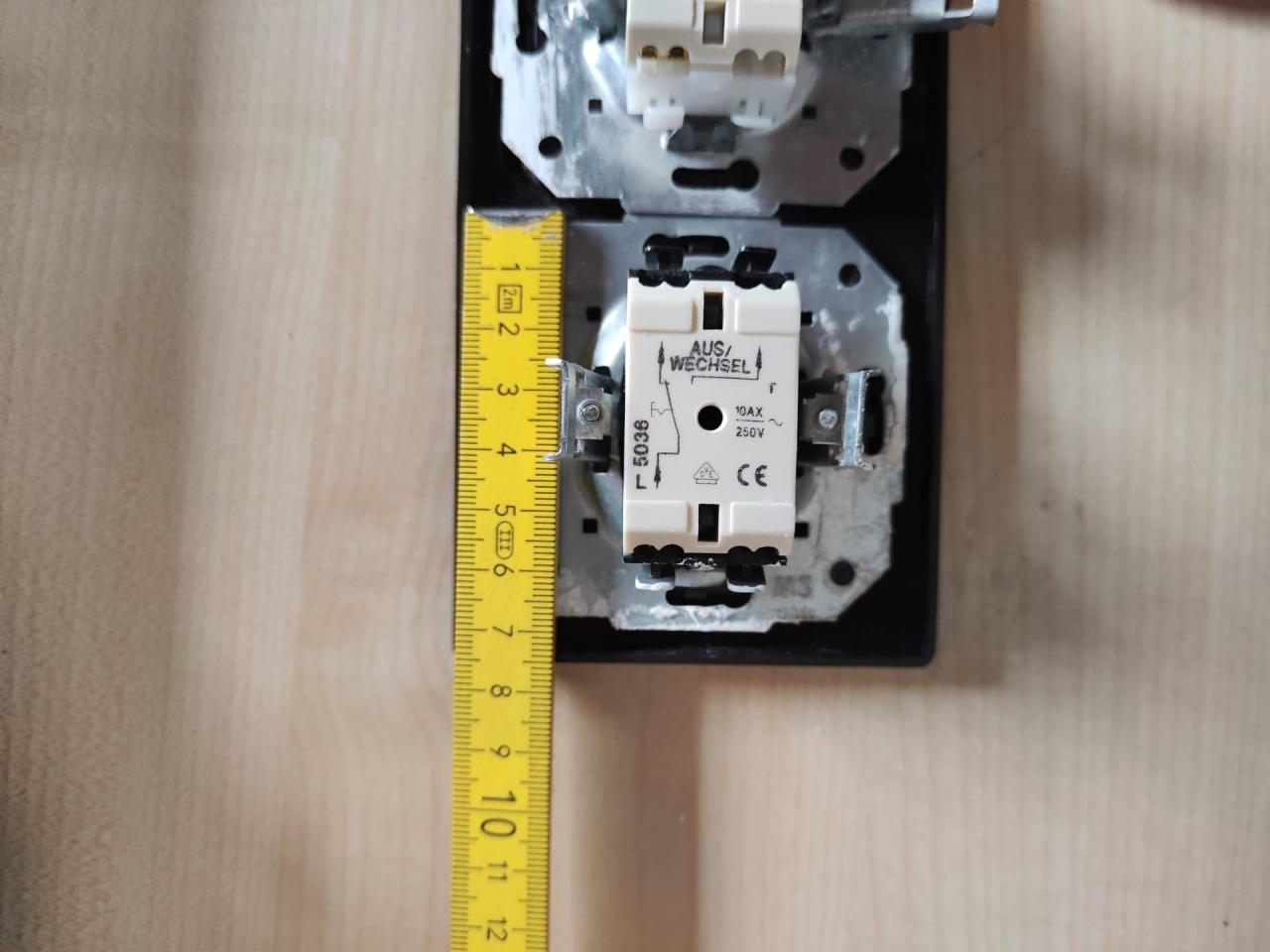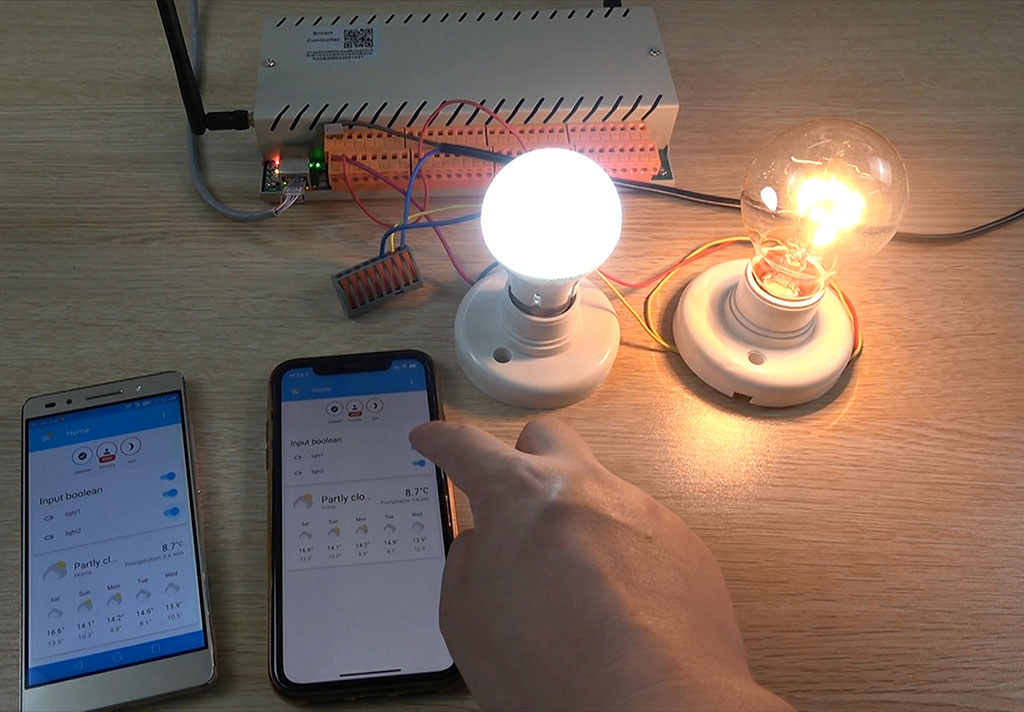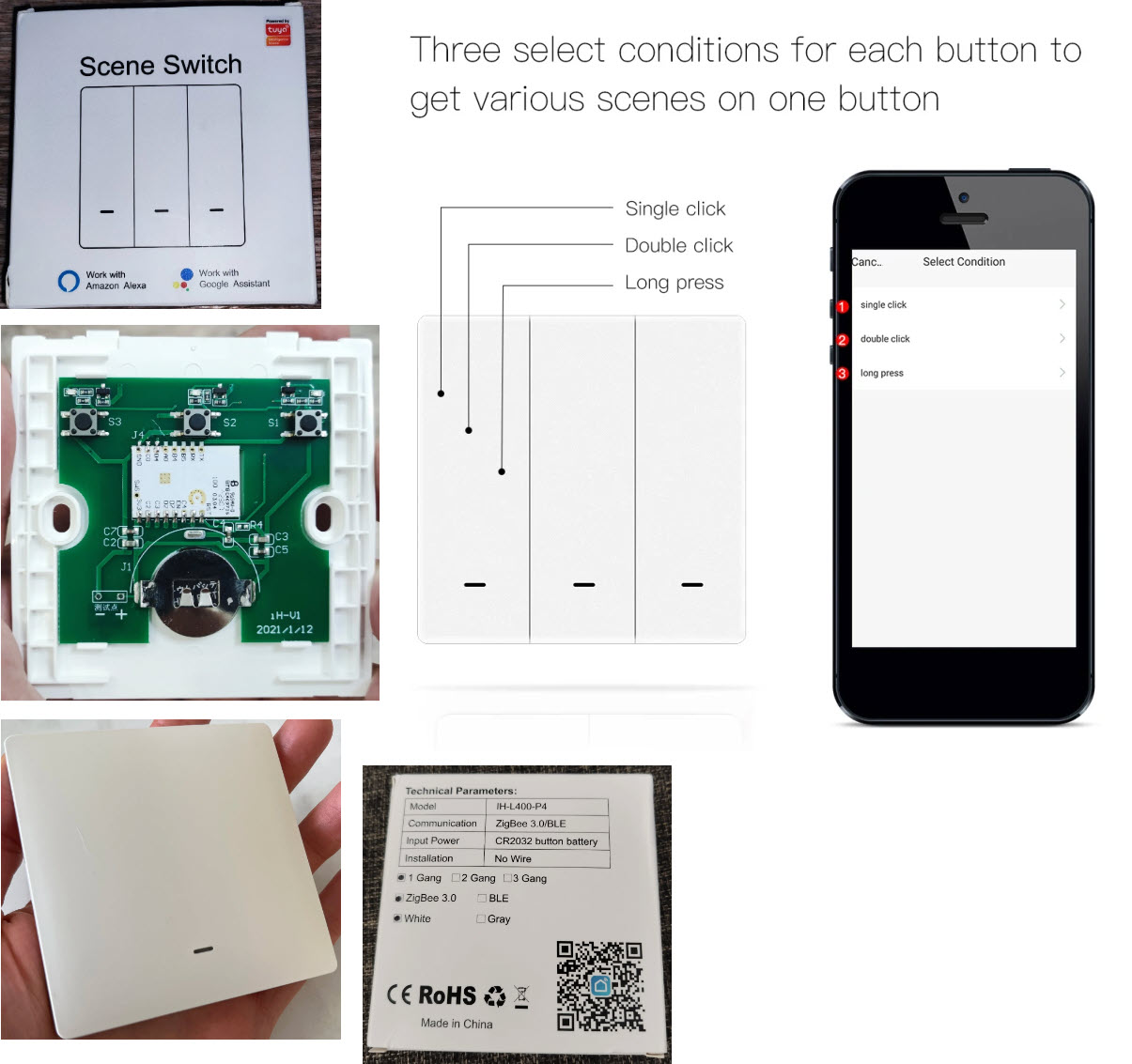Homeassistant switch serves as the backbone of modern smart home automation, allowing seamless control and integration of various smart devices within your living space. This innovative technology not only enhances convenience but also improves energy efficiency, enabling you to manage your home effortlessly.
As we delve into the world of homeassistant switches, we will explore their types, installation processes, advanced features, and essential security measures, ensuring you have a complete understanding of how to optimize your smart home experience.
Home Assistant Switch Overview

Home Assistant switches serve as vital components in the realm of smart home automation, enabling users to manage their home environment efficiently. By integrating various electrical devices into a unified system, these switches afford users the ability to control lights, appliances, and other electronic devices remotely or through automated routines. This functionality amplifies convenience and fosters energy efficiency, marking a significant evolution from traditional control methods.
The compatibility of switches with Home Assistant systems spans a variety of types. These include smart switches, which connect to the home Wi-Fi network, and various protocols like Zigbee and Z-Wave that allow seamless communication between devices. Below is a breakdown of the primary types of switches compatible with Home Assistant:
Types of Switches Compatible with Home Assistant
The diverse range of switches compatible with Home Assistant allows for tailored automation solutions. Understanding these types helps users select the best options for their specific needs.
- Wi-Fi Smart Switches: These connect directly to the home Wi-Fi network and are controlled via smartphone apps or voice assistants. They are known for ease of installation and immediate access without the need for a hub.
- Zigbee Switches: Operate on a low-power mesh networking protocol, allowing multiple devices to communicate efficiently. They often require a Zigbee hub but offer reliable performance over long distances.
- Z-Wave Switches: Another type of low-energy, mesh network device similar to Zigbee, Z-Wave operates on a different frequency, providing excellent range and compatibility with numerous smart home systems.
- Bluetooth Switches: These offer limited range and generally connect to devices directly. While effective for localized automation, they may not provide the comprehensive control found in other types.
- Traditional Smart Switches: These are replacements for standard light switches, often requiring installation by a professional. They integrate with smart home ecosystems to offer remote access and automation capabilities.
Comparison of Smart Switches Versus Traditional Switches
Smart switches significantly differ from their traditional counterparts, providing enhanced functionalities that cater to modern lifestyle needs. While traditional switches serve the basic purpose of connecting or disconnecting power, smart switches offer features that elevate home automation.
Smart switches allow for remote control, scheduling, and integration with other smart devices, fostering greater energy efficiency and convenience.
The following comparison illustrates the key differences:
| Feature | Smart Switches | Traditional Switches |
|---|---|---|
| Control Method | Remote access via apps or voice commands | Manual operation only |
| Automation | Can be programmed for schedules or routines | No automation features |
| Energy Monitoring | Often includes energy usage tracking | No tracking features |
| Installation Complexity | Can be simple or complex, depending on type | Generally straightforward installation |
| Integration with Smart Home Systems | Compatible with various smart home platforms | No integration capability |
Through these comparisons, it is evident that smart switches not only enhance user convenience but also contribute to energy savings and integrated home automation, making them a preferred choice for modern households.
Setting Up Home Assistant Switches

Installing smart switches within a Home Assistant system is a pivotal step towards automating your home environment. This process not only provides convenience but also significantly enhances energy management and control. Understanding the steps involved in the setup can ensure a smooth integration of these devices into your smart home ecosystem.
Steps to Install a Smart Switch
The installation of a smart switch involves several critical steps that should be followed carefully to ensure functionality and safety. Here’s a detailed guide to help you through the process:
- Choose Compatible Switches: Verify that the smart switches you intend to use are compatible with Home Assistant. Popular brands often provide documentation on compatibility.
- Turn Off Power: Before beginning the installation, ensure that the power to the circuit you will be working on is turned off at the breaker to avoid electrical hazards.
- Remove Existing Switch: Carefully remove the existing switch from the wall by unscrewing it and disconnecting the wires. Take note of the wiring configuration for reference.
- Connect Smart Switch: Attach the wires to the new smart switch according to the manufacturer’s instructions, typically involving connecting line, load, and ground wires.
- Secure the Switch: Once the connections are made, secure the smart switch back into the wall box and cover it with the faceplate.
- Restore Power: Turn the power back on at the breaker and test the switch to ensure it is functioning correctly.
- Integrate with Home Assistant: Use the Home Assistant interface to discover and configure the new switch, ensuring it appears in your dashboard and is controllable through the app or automation scripts.
Troubleshooting Common Setup Issues, Homeassistant switch
Even with careful installation, issues may arise during the setup of smart switches. Here’s a troubleshooting guide to address common problems you might encounter:
Many installation problems can be resolved by revisiting the wiring and ensuring compatibility with the Home Assistant ecosystem.
- Switch Not Responding: Ensure that the switch is powered and properly connected to your Wi-Fi network. Check the Home Assistant logs for any error messages.
- Inconsistent Performance: This may be caused by network interference. Try relocating your Wi-Fi router or using a Wi-Fi extender to improve signal strength.
- Integration Issues: If the switch isn’t appearing in Home Assistant, confirm that the integration for your specific switch is enabled and check the API or MQTT settings.
- Firmware Updates: Regularly check for firmware updates for your smart switch, as these can fix bugs and improve functionality.
Best Practices for Integrating Multiple Switches
Integrating multiple switches into a single Home Assistant environment can enhance automation but requires careful planning. Here are some best practices to ensure seamless integration:
Proper organization and naming conventions are key to managing multiple smart switches effectively.
- Consistent Naming: Use a consistent naming convention for switches, such as ‘Living Room Light’ or ‘Kitchen Fan’, to make identification easy within the Home Assistant dashboard.
- Group Similar Devices: Create groups for similar devices to streamline control. For example, group all living room lights together for unified management.
- Automate with Scripts: Utilize Home Assistant scripts and automations to control multiple switches simultaneously based on triggers, such as time of day or motion detection.
- Regular Maintenance: Periodically check the status of each switch within Home Assistant. This ensures your system remains updated and functional, addressing any connectivity issues promptly.
Advanced Features of Home Assistant Switches: Homeassistant Switch

Home Assistant switches offer a wide array of advanced features that enhance the automation and control of your smart home. These capabilities extend beyond simple ON/OFF functions, allowing users to create sophisticated automation routines and integrate voice controls seamlessly.
Automation Capabilities of Home Assistant Switches
The automation capabilities of Home Assistant switches empower users to create intricate scenarios that cater to specific needs and preferences. By utilizing YAML configuration files, users can easily program their switches to respond to various triggers and conditions. This allows for a rich interaction between different devices and services within the Home Assistant ecosystem.
To create an automation, the following components are typically defined:
- Trigger: The event that starts the automation, such as a specific time, motion detected, or a change in another device’s state.
- Condition: Optional constraints that must be met for the automation to execute, such as checking if someone is home or if the sun has set.
- Action: The task that is performed when the automation is triggered, like turning on a switch, sending a notification, or adjusting the thermostat.
For example, an automation can be set up to turn on the living room lights when motion is detected after sunset, enhancing both convenience and security.
Integration of Voice Control Features with Home Assistant Switches
Home Assistant switches can be easily integrated with voice control systems, enabling hands-free operation for users. By connecting to virtual assistants like Google Assistant or Amazon Alexa, Home Assistant allows for voice commands to control switches directly.
To set this up, users typically:
- Enable the Home Assistant component for their chosen voice assistant.
- Link their Home Assistant account with the voice assistant.
- Configure the relevant entities (switches) to be accessible via voice commands.
This integration means users can simply say, “Turn on the living room lights,” and the command will be executed instantly, showcasing the convenience of modern smart home systems.
Complex Automation Scenarios Involving Multiple Home Assistant Switches
Advanced users can leverage multiple Home Assistant switches to create complex automation scenarios that enhance functionality and improve daily routines. These scenarios often involve several devices responding to a single trigger or condition, showcasing the flexibility of Home Assistant.
For instance, consider a “Movie Night” automation that could involve:
- Dimming the living room lights.
- Turning on a smart TV.
- Adjusting the thermostat to a comfortable temperature.
- Closing smart blinds.
This single command can trigger a sequence of actions, transforming the living space into the perfect environment for watching films.
Another scenario could involve managing energy consumption by programming switches to turn off non-essential devices during peak hours, thereby reducing electricity costs and promoting energy efficiency.
“By utilizing complex automation, users can significantly enhance their smart home experience, making it not only more convenient but also more efficient.”
The versatility of Home Assistant switches in these scenarios illustrates their capability to work in harmony with various devices and services, allowing for a truly customized smart home experience.
Home Assistant Switch Security
As smart home technology continues to evolve, ensuring the security of devices like Home Assistant switches becomes paramount. While these switches offer convenience and enhanced control over home environments, they also introduce potential vulnerabilities that can be exploited by unauthorized users. Understanding these risks and implementing robust security measures is crucial for protecting your smart home ecosystem.
Potential Security Risks Associated with Smart Switches
Smart switches can be vulnerable to various security threats, which can compromise not just the switch itself but also the entire home network. Here are some key risks to consider:
- Unauthorized Access: If switches are not secured properly, unauthorized individuals can gain control, potentially manipulating devices and accessing sensitive information.
- Weak Passwords: Many users may rely on default passwords or simple combinations, which can be easily guessed or cracked by attackers.
- Insecure Wi-Fi Networks: If the network used to connect smart switches is poorly secured, it can become a point of entry for cybercriminals.
- Outdated Firmware: Smart devices that do not have the latest firmware updates can be vulnerable to known exploits, making them easier targets for hackers.
Methods to Secure Home Assistant Switches
Securing your Home Assistant switches requires a strategic approach that encompasses both technical measures and best practices. Implementing these strategies can significantly reduce the risk of unauthorized access:
- Change Default Credentials: Always change the default username and password to unique, complex combinations to enhance security.
- Enable Two-Factor Authentication (2FA): If supported, enabling 2FA adds an additional layer of security, requiring a second form of verification beyond just the password.
- Use a Secure Wi-Fi Network: Ensure your home Wi-Fi network is secured with WPA3 encryption and a strong, unique password to prevent unauthorized access.
- Implement Network Segmentation: Consider placing smart devices on a separate network away from personal devices to limit exposure and potential breaches.
The Importance of Regular Firmware Updates
Regular firmware updates play a critical role in maintaining the security of Home Assistant switches. Manufacturers often release updates to address vulnerabilities and enhance functionality. By keeping firmware up to date, users can protect their devices from known exploits.
“Regular updates are essential for safeguarding devices against emerging threats and vulnerabilities.”
- Automate Updates if Possible: Many systems allow for automatic updates; enabling this feature can ensure you don’t miss critical patches.
- Check for Manual Updates: For devices that do not support automatic updates, regularly check the manufacturer’s website for the latest firmware releases.
- Review Update Notes: Understanding what each update entails can help users appreciate the importance of keeping their devices secure.
By prioritizing security measures, Home Assistant switch users can create a safer smart home environment, reducing the risk of unauthorized access and ensuring that their devices function optimally.
Expert Answers
What is a homeassistant switch?
A homeassistant switch is a smart device that allows remote control and automation of electrical devices within a smart home system.
Can I use traditional switches with homeassistant?
While traditional switches are not compatible, smart switches can often be configured to work with homeassistant systems for enhanced automation.
How do I troubleshoot setup issues with homeassistant switches?
Common troubleshooting steps include checking the power supply, ensuring network connectivity, and reviewing configuration settings within the homeassistant interface.
Are homeassistant switches secure?
Yes, but they can be vulnerable without proper security measures such as strong passwords and regular firmware updates.
Can I control homeassistant switches with my voice?
Absolutely! Homeassistant switches can be integrated with voice control platforms, allowing for hands-free operation of your devices.
The Sensibo Sky is revolutionizing how we interact with our air conditioning units, enabling users to control their environment effortlessly through a smartphone app. This smart device not only enhances comfort but also promotes energy efficiency, making it an essential addition for tech-savvy homeowners looking to optimize their living spaces.
Integrating your home technology has never been easier with Samsung Smart Things. This platform allows you to manage and automate all your smart devices from one user-friendly app, ensuring seamless connectivity and control over your home environment. Whether it’s lighting, security, or appliances, Smart Things is a game changer in home automation.